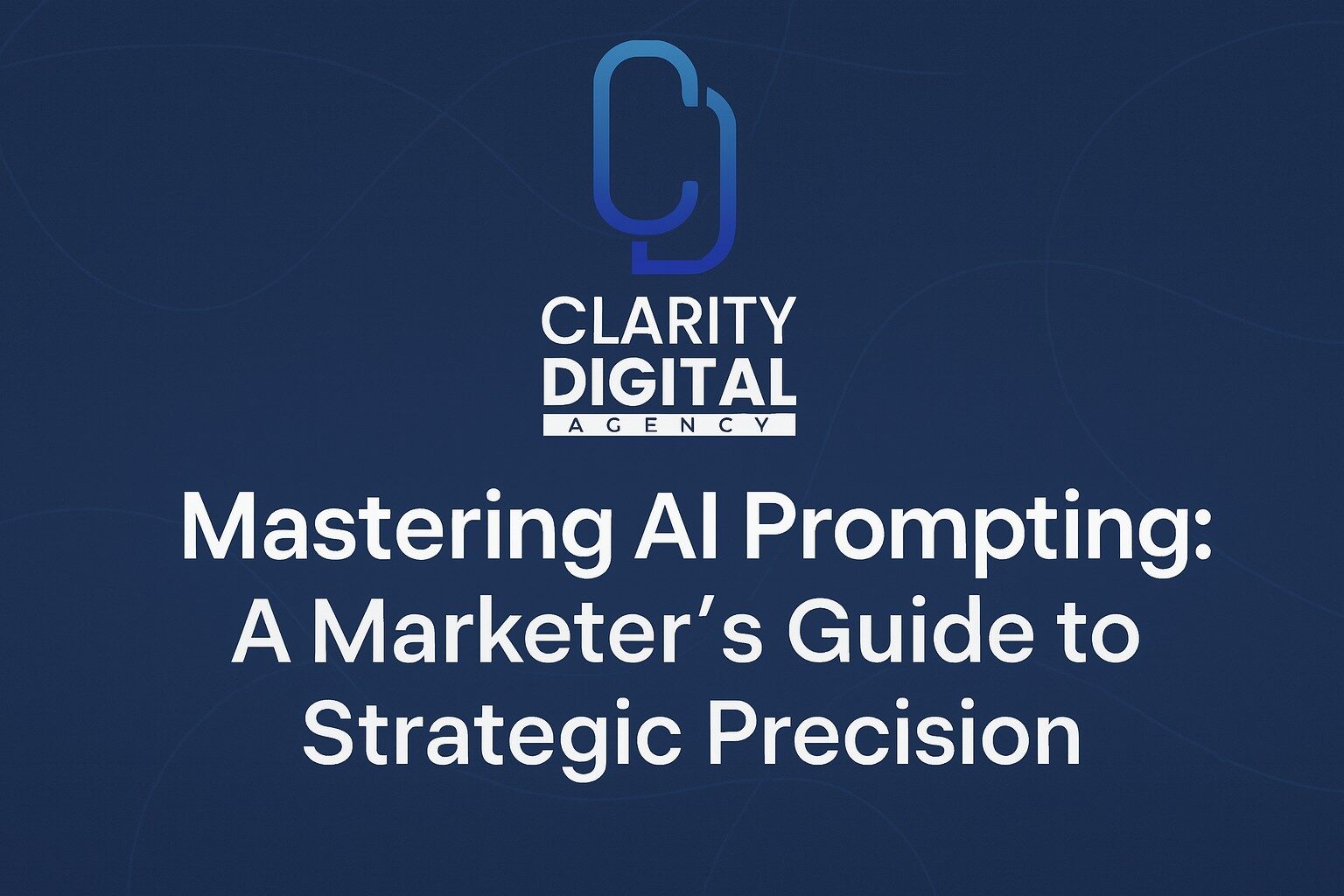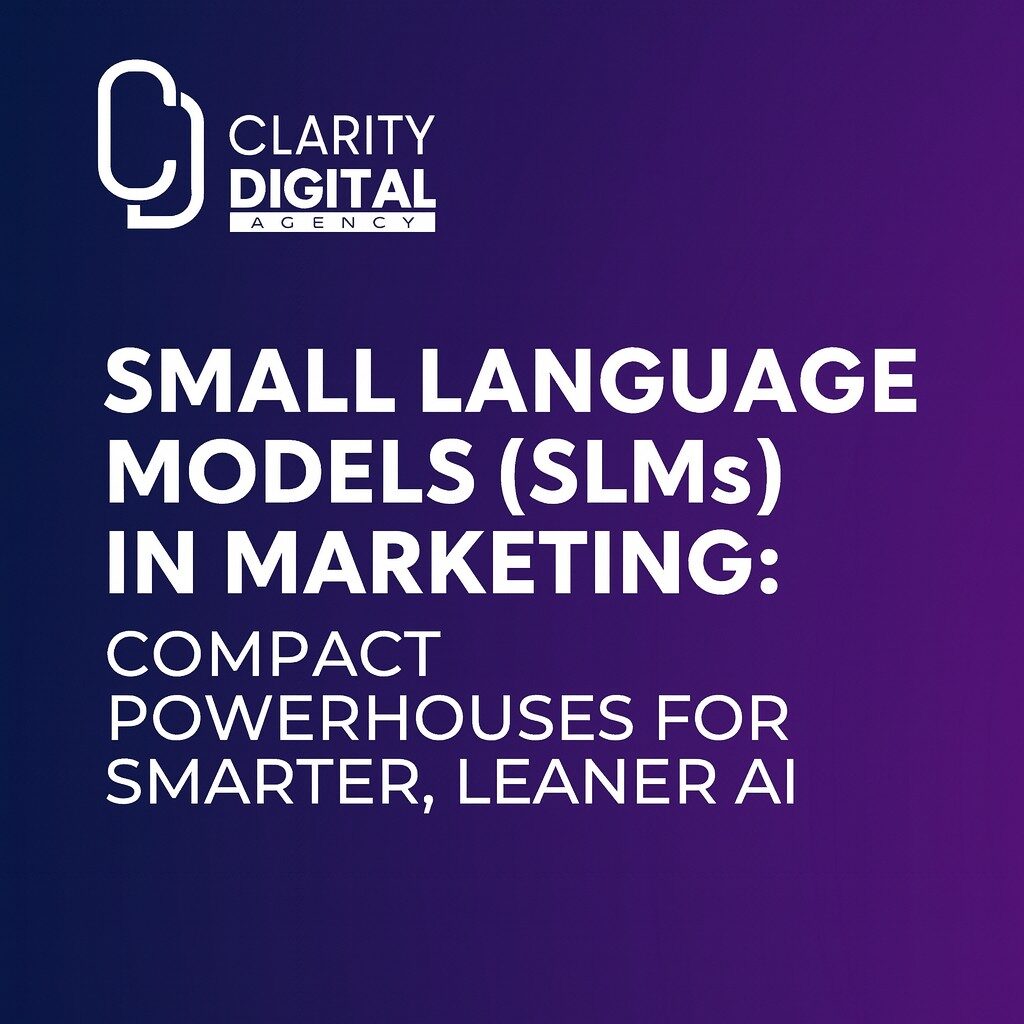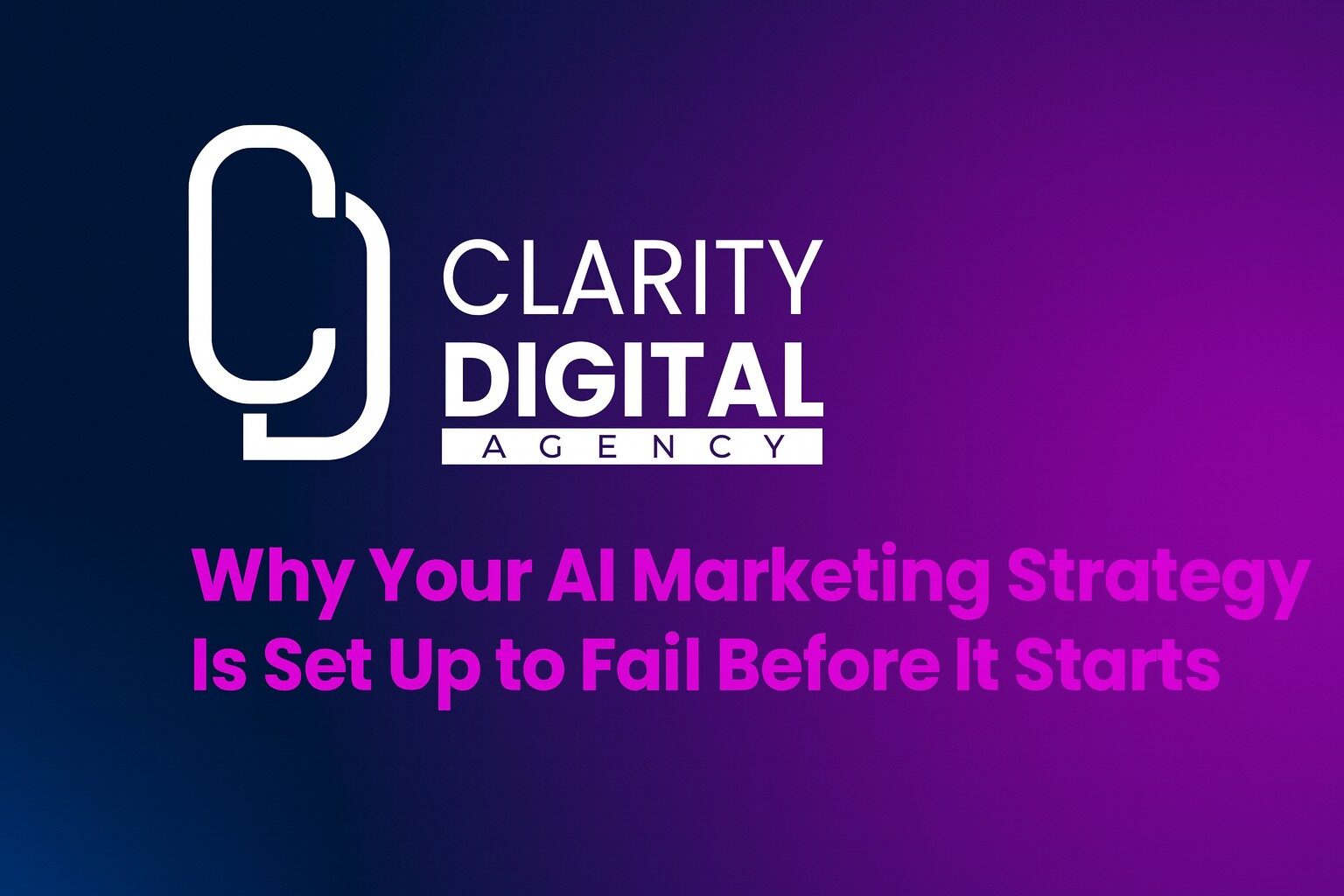In modern marketing, success is not only about creative ideas or large budgets. It is about precision. In the era of generative AI, competitive advantage often comes down to how well marketers communicate with the tools they use. Prompt engineering is no longer optional. It is essential.
At Clarity Digital Agency, we believe prompt engineering is a foundational marketing skill. The right prompt can turn AI into a strategic extension of your team. The wrong one results in generic outputs that slow everything down. This guide breaks down the seven core prompt types every marketer should know, along with real-world applications, strengths, and limitations.
Why Prompt Engineering Matters
Marketers now work in an environment where AI tools assist with everything from writing and SEO to campaign planning, analytics, and go-to-market strategy. But the value you get from those tools is directly tied to the quality of your input.
A vague or misaligned prompt wastes time and delivers lackluster content. A well-structured prompt, tailored to your goals and audience, unlocks relevant, strategic, and brand-aligned output.
The 7 Core AI Prompt Types for Marketing
Here is a framework that outlines the key prompt types marketers should master. Each type includes a clear explanation, when to use it, and potential tradeoffs.
| Prompt Type | Explanation | Marketing Applications | Strengths | Limitations |
|---|---|---|---|---|
| Instructional | A direct command telling AI exactly what to do. | Writing blog posts, building strategy decks, drafting ad copy. | Clear, fast output. | May lack nuance if too simple. |
| Contextual | Provides background or scenario before asking for a task. | Launch planning, audience segmentation, messaging frameworks. | Deeper and more relevant responses. | Requires more effort to structure well. |
| Role-Based | Assigns a role to AI, such as CMO, SEO expert, or strategist. | SEO audits, media reviews, CRO plans, PR analysis. | Produces domain-specific answers. | Risk of shallow or generic output without setup. |
| Step-by-Step (Chain) | Guides AI through sequential reasoning across multiple steps. | Content calendars, nurture journeys, ad campaign building. | Structured, comprehensive responses. | Slower; may need more guidance between steps. |
| Comparative | Asks AI to evaluate or contrast different options. | Ad platform selection, martech evaluation, budget allocation. | Supports sound decision-making. | Risk of superficial comparisons if underdefined. |
| Constraint-Based | Adds restrictions like tone, word count, or formatting. | SEO meta descriptions, paid ad headlines, product descriptions. | High control and consistency. | Creativity may be limited. |
| Iterative | Prompts a back-and-forth refinement or revision process. | Executive thought leadership, landing pages, whitepapers. | Improves quality over time. | Can be time-consuming if not goal-focused. |
Real-World Prompt Examples by Type
Instructional Prompt
Prompt:
“Create a go-to-market strategy outline for a SaaS product targeting mid-sized HR teams. Include key messaging, primary channels, and KPIs.”
Use when: You have a clear task and want a fast, complete draft.
Marketing value: Campaign briefs, strategy decks, ad copywriting.
Contextual Prompt
Prompt:
“We’re launching a new AI platform for B2B SaaS companies. Budget is $50,000 with a 6-month runway. Based on this, provide a GTM strategy with realistic goals.”
Use when: Real-world inputs like budget or audience matter.
Marketing value: Launch plans, persona development, messaging matrices.
Role-Based Prompt
Prompt:
“Act as an enterprise SEO consultant. Conduct a high-level SEO audit for a site with 100K monthly visitors and flat traffic growth. Focus on technical and content opportunities.”
Use when: You want the model to simulate domain expertise.
Marketing value: Audits, competitor analysis, CRO reviews.
Step-by-Step Prompt
Prompt:
“First, list the top five challenges in launching a DTC skincare brand. Then, provide one marketing tactic for each challenge. Finally, recommend the best channel to execute each tactic.”
Use when: You need structured thinking across stages.
Marketing value: Strategy roadmaps, nurture campaigns, ad flows.
Comparative Prompt
Prompt:
“Compare LinkedIn Ads and Google Ads for a B2B SaaS product launch. Include pros, cons, estimated CPCs, and a recommendation based on a $10K/month budget.”
Use when: Evaluating platforms, tools, or approaches.
Marketing value: Paid media planning, vendor evaluation, budgeting.
Constraint-Based Prompt
Prompt:
“Write an SEO meta title for a B2B AI software landing page. Max 60 characters. Must include the keyword ‘enterprise AI platform’. Tone: authoritative.”
Use when: Word count, tone, and brand compliance matter.
Marketing value: SEO, ad copy, email subject lines.
Iterative Prompt
Prompt:
“Draft a thought leadership article on the future of AI in marketing. Then revise it to make it more concise, add two stats, and improve flow.”
Use when: You want to refine and improve through feedback loops.
Marketing value: Executive content, long-form blogs, investor comms.
Putting It All Together
Prompt engineering is now a vital part of the marketing skillset. Whether you are building a demand generation campaign, conducting an SEO audit, or developing messaging for a product launch, how you engage AI tools determines the outcome.
The good news is, prompt engineering is teachable. With the right examples and some strategic thinking, marketers can produce content, insights, and strategies that outperform their competition. And the best part? AI can scale your thinking, but only if you know how to lead it.
Work with Clarity Digital to Transform Your AI Marketing
At Clarity Digital Agency, we partner with SaaS companies, B2B brands, ecommerce teams, and growth-stage startups to turn AI into a real competitive advantage. Our approach blends real-world marketing strategy with AI-driven execution across SEO, SEM, demand generation, and GTM campaigns.
We help your team write better prompts, build smarter workflows, and operationalize AI where it makes the biggest impact.
Contact us to learn how we can support your team in its AI transformation. AI should not be overwhelming. It should be actionable, strategic, and precise.





